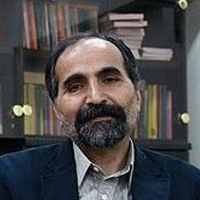The link between Cinema and Fact (Research on Reflection of Political Demands in Iranian Cinema from 1995 to 2006)
Author(s):
Abstract:
In cinema، the relationship between art and society is questioned more than other kinds of art. Among all diverse approaches studying cinema، the reflection approach- believing cinema is impressed by the society. This approach is a theoretical framework of this research. The main question is how cinema reflected political demands of Iranian society from 1995 to 2006. This period is noticeable changes in Iranians'' political elections. In May 1997 a fairly anonymous politician won presidential election surprisingly and established his state called the reform state. Soon، afterward his sympathetic، called reformists، won city council and parliament election till 2001 that he reelected as the Islamic republic of Iran president. But afterward، reformists lost all elections till 2005 when the election of another anonymous president nearly put them away of political scene. We see these changes like this: people seeking democracy and justice، and politicians being symbols of those two. We believe these two are the main demands Iranians want from institutions of political power. Showing ups and downs of these demands، we examine if they reflected in cinema or not. In this examination we consider freedom of cinema as a condition for reflecting facts، especially in case of political demands which needs much more free cinema to be shown. Dividing these 11 yeare period to three sub periods we conclude that: 1. in the last years of Hashemi''s state even though the society had noticeable demand to change but since cinema wasn''t free enough، nothing had been showed. There was no important movie showing people want democracy so eagerly. 2. At the first state of Khatami، giving a little freedom to cinema made it an appropriate media to reflect people''s political demands. This period had movies having the demand for democracy and justice as their main theme. 3. The second state of Khatami let cinema have freedom but that cinema showed that seeking democracy falls and demand for justice increases، something the society shows too with electing Ahmadi Nezhad as a president and as a symbol of demand for justice at the same time. Finding out people political demands، we used secondary analysis method which let researcher makes advantage of other researchers'' findings. And we used thematic analysis to know which films had pictured demands of democracy and justice as their main theme. Population of the research was all the movies having public appearance from 1995 to 2006 and the sample was 110 movies consist of 10 best-sellers of each year. The sampling method was intended sampling and choosing best-sellers was a way to ensure that the movies had people approval with themselves.
Keywords:
Language:
Persian
Published:
Sociology of Art and Literature, Volume:5 Issue: 1, 2013
Pages:
83 to 102
magiran.com/p1351738
دانلود و مطالعه متن این مقاله با یکی از روشهای زیر امکان پذیر است:
اشتراک شخصی
با عضویت و پرداخت آنلاین حق اشتراک یکساله به مبلغ 1,390,000ريال میتوانید 70 عنوان مطلب دانلود کنید!
اشتراک سازمانی
به کتابخانه دانشگاه یا محل کار خود پیشنهاد کنید تا اشتراک سازمانی این پایگاه را برای دسترسی نامحدود همه کاربران به متن مطالب تهیه نمایند!
توجه!
- حق عضویت دریافتی صرف حمایت از نشریات عضو و نگهداری، تکمیل و توسعه مگیران میشود.
- پرداخت حق اشتراک و دانلود مقالات اجازه بازنشر آن در سایر رسانههای چاپی و دیجیتال را به کاربر نمیدهد.
In order to view content subscription is required
Personal subscription
Subscribe magiran.com for 70 € euros via PayPal and download 70 articles during a year.
Organization subscription
Please contact us to subscribe your university or library for unlimited access!



